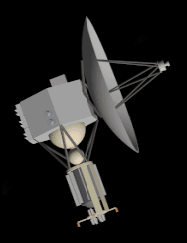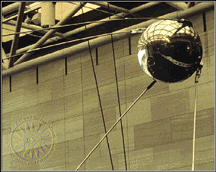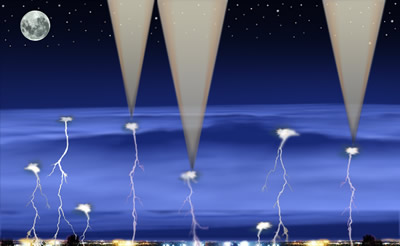Click on image for full size
NASA/JPL
Satellites
A satellite is any object that moves around another object. The Moon is a natural (not created by human beings) satellite of Earth.
Over the past fifty years, we have figured out how to make new Earth satellites. Since the 1957 Sputnik 1, thousands of satellites have been launched and many are still in orbit around Earth.
Satellites provide us with information about the universe that could not be obtained from ground-based observations. They also give us a perspective of our own planet. They are responsible for taking pictures of the Earth's weather that we see on the evening news, and they make it possible for us to watch events on T.V. that are happening on the other side of the world.










